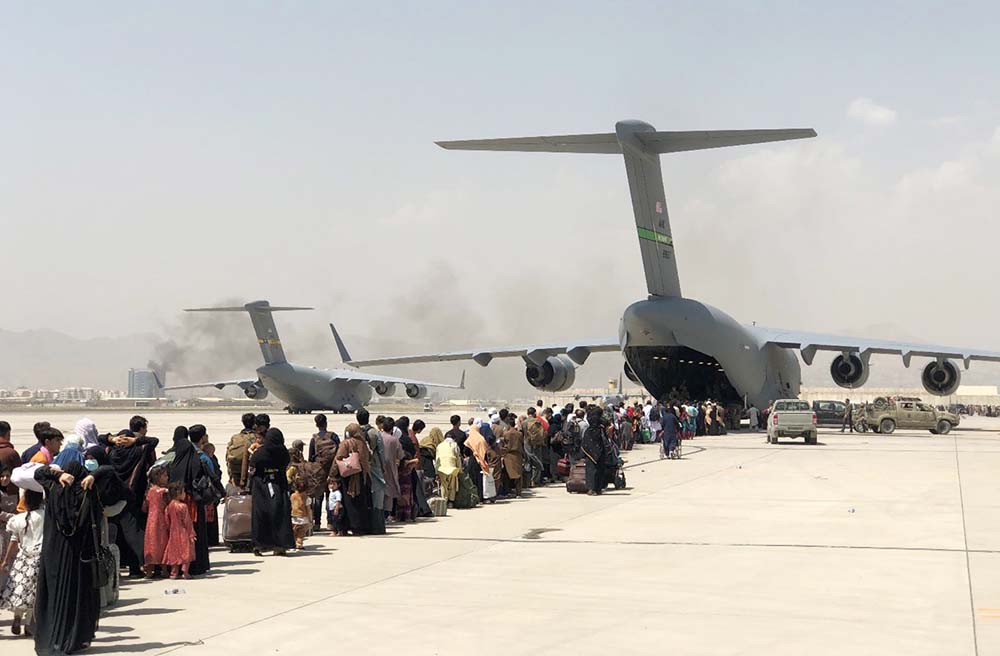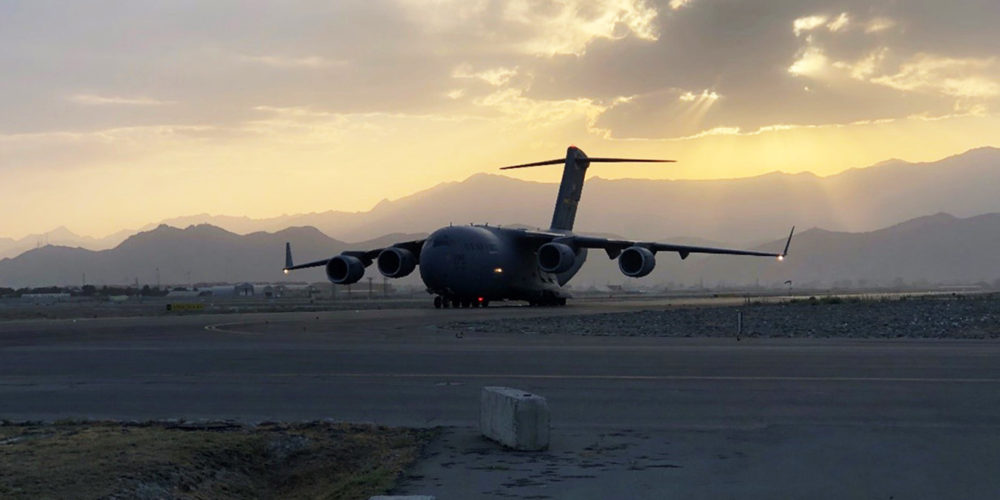When Doug Mayo (’11) heard about Operation Allies Refuge, he felt it imperative that he volunteer. As an F-16 pilot who commissioned out of Air Force ROTC Detachment 157, he had flown over Afghanistan in 2015, protecting the lives of soldiers on the ground by taking the lives of others. It was his job, and an important and necessary one, but he still carries the weight of it.
“When I recognized the magnitude of lives we would be able to save, I saw it as a yin to the yang, an opportunity to balance what I had to do in 2015,” Mayo says.
In August 2021, he flew on military transport to Hamid Karzai International Airport in Kabul, where he supported what would become the largest noncombatant evacuation operation in United States history. He worked alongside servicemen and women from multiple military branches, as well as fellow alumni from Embry-Riddle and Det. 157, to evacuate 120,000 Americans, Afghans and other international allies from a country that was rapidly returning to Taliban control.
A No-Fail Mission
Mayo arrived in Kabul to work as a logistical problem-solver with Adam Cooper (’13), who always wears a small Embry-Riddle patch on his uniform. Cooper is director of operations for a contingency response element, a rapid-deployment team that operates the airfield and airspace in a contested environment.
Cooper says about 100 aircraft arrived every day and would usually be wheels-up again in less than an hour, even with as many as 450 people to pack in.

“In expedited noncombatant evacuations like this, the goal is to keep the aircraft on the ground for the least amount of time possible,” Cooper says. “They’re not even turning off their engines.”
Operators on a no-fail mission like this one expect to forgo all normalcy until the job is done. That means sacrificing sleep and scheduled meals. “Ops never stops,” Cooper says.
Matt Steele (’09, ’18), a C-17 pilot, says that nothing was routine. “Pretty much every day you woke up you didn’t know what to expect,” he says. “You had the minimum 12 hours crew rest, then you were back at it,” not knowing how many more long days there would be.
120,000 Souls Freed
Steele, Mayo and Cooper were all hit by the human weight of this mission. The desperation among evacuees became even more apparent after two suicide bombers and gunmen successfully attacked areas around the airport, which led to the banning of any luggage. People were leaving with only the clothes they wore, Mayo says.

“I saw people wanting to get to a safe, free place where their daughters can go to school freely. Many of these folks were at constant risk. Military members rotate in and out, but these people would help us, and the rest of their lives they were in a threatened environment because of the help they provided us. It’s so important that we welcome them and provide a great place for them to go.”
The rugged C-17s, which normally hold 134 passengers when fitted with seats, became a flat-floored lifeboat for 450, sometimes more. Air Mobility Command confirmed that one flight set a C-17 passenger record of 823, including 183 children.
Despite the tight quarters, evacuees seemed to take on a sense of relief while on board. Mayo, a father of two, was reminded once again of the importance of this mission while sitting across from an Afghan man on his flight out of Kabul.
“He had a woman, probably his wife, next to him, his daughter on his lap and his son sitting near his feet, and just seeing the way he was holding his daughter, it was great to get a chance to be in their presence and see the multitude of emotions on his face as he left behind probably everything he’s ever known.”
“But he did it with his family, and now his family is safe. The whole trip was worth it because of that.”
Photos provided by Adam Cooper (’13), Doug Mayo (’11) and Matt Steele (’09, ’18)
